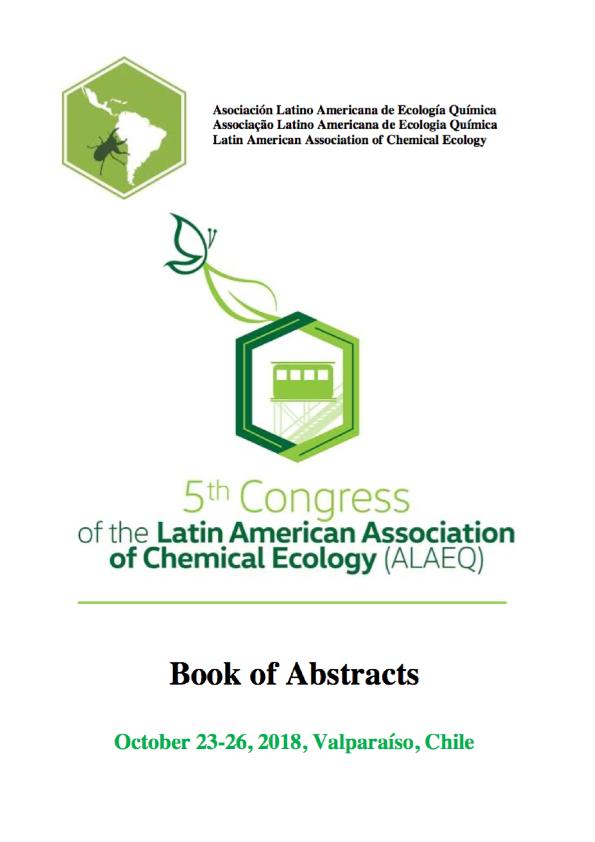Evento
Herbivory by conspecifics affects behavior and development of Nematus Oligospilus females and their offspring
Valladares, Gabriela Alejandra ; Coll Araoz, Maria Victoria
; Coll Araoz, Maria Victoria ; Vera, Teresa; Fernandez, Patricia Carina
; Vera, Teresa; Fernandez, Patricia Carina
 ; Coll Araoz, Maria Victoria
; Coll Araoz, Maria Victoria ; Vera, Teresa; Fernandez, Patricia Carina
; Vera, Teresa; Fernandez, Patricia Carina
Tipo del evento:
Congreso
Nombre del evento:
5th Cogress of the Latin American Association of Chemical Ecology
Fecha del evento:
23/10/2018
Institución Organizadora:
Pontificia Universidad Católica de Valparaíso;
Asociación Latinoamericana de Ecología Química;
Título del Libro:
Book of Abstracts: 5 th Congress of the Latin American Association of Chemical Ecology
Editorial:
Pontificia Universidad Católica de Valparaíso
Idioma:
Inglés
Clasificación temática:
Resumen
In most herbivores, females oviposition choices are crucial for their offspring, because larvae lack mobility to select their own feeding places.The willow sawfly, Nematus oligospilus (Förster), is an exotic pest in Salix commercial forests and has been reported worldwide. Females of this species must find and recognize their host plant when they emerge as adults after pupating in the soil. In the context of the preference-performance hypothesis, we evaluated the effect of conspecific herbivory on the oviposition behavior and the larval performance of N. oligospilus females, reared on damaged and undamaged plants; and we compared the chemical profile of volatiles of damaged and undamaged plants.We conducted behavioral experiments to see how females make oviposition decision. N. oligospilus females preferred leaves of Salix humboldtiana without previous exposition to larvae of its own species for oviposition. Since females oriented towards undamaged leaves without contact, results suggested that a long distance cue could be acting as a first repulsive system alarm of the damaged plant. Then, we evaluated larvae development on damaged and undamaged leaves. We found that the first stages of development were affected since the percentage of hatching was lower, the larval size was smaller and the time to pupation was higher in larvae reared on damaged plants. We did not find significant differences in the pupal weight and fecundity from individuals reared either on damaged or undamaged leaves. Finally, in a search of the chemical cues associated to this host accepting behavior, plant volatiles were analyzed. We found significantly more sesquiterpenes in damaged plants, particularly germacrene D, which was released in higher amounts in the previously induced feeding plants. We proposed that these compounds could be acting as important cues to avoid unfavorable leaves for the larvae.
Palabras clave:
HERBIVORY
,
SEMIOCHEMICALS
,
SALIX HUMBOLDTIANA
,
HERBIVORE PERFORMANCE
Archivos asociados
Licencia
Identificadores
Colecciones
Eventos(PROIMI)
Eventos de PLANTA PILOTO DE PROC.IND.MICROBIOLOGICOS (I)
Eventos de PLANTA PILOTO DE PROC.IND.MICROBIOLOGICOS (I)
Citación
Herbivory by conspecifics affects behavior and development of Nematus Oligospilus females and their offspring; 5th Cogress of the Latin American Association of Chemical Ecology; Valparaíso; Chile; 2018; 1-2
Compartir



